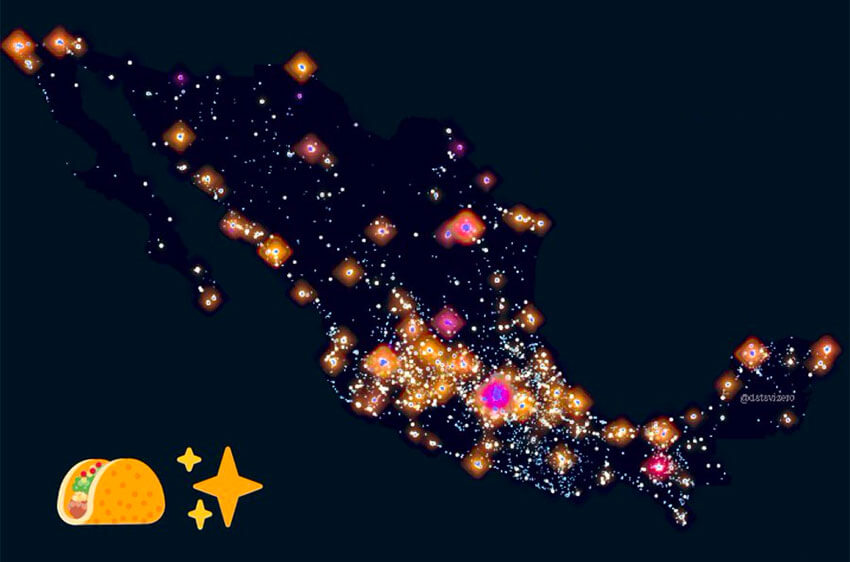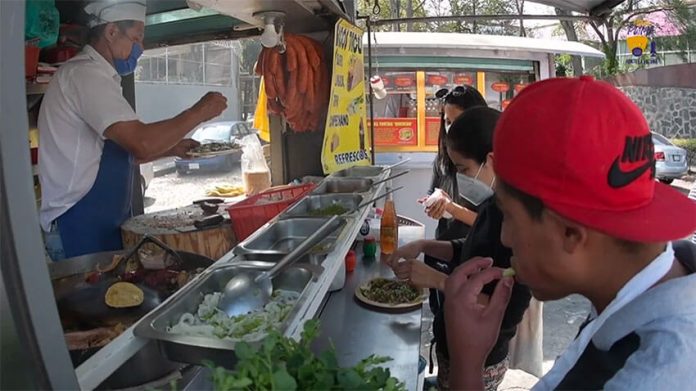The taco is central to Mexican cuisine and a taco stand, or taquería, is never far from a hungry taco lover. Just how ubiquitous the taco restaurants are has been shown by a geographer from the National Autonomous University (UNAM).
Baruch Sanginés mapped all of the taquerías in the country with data from the national statistics agency INEGI via geolocation. His Taco Universe revealed 1.6 million sites and showed the correlation between population density and taco availability, presenting a high concentration of taco shops around urban centers.
“Here in Mexico City I could almost tell you that 95% of people have a taco stand 400 meters from their home. No matter where you live, almost 400 meters away you have a stall nearby. That speaks to the popularity of the taco,” he said.
However, Sanginés added that there was a dearth of sites in Lomas de Chapultepec, an exclusive and hilly neighborhood in the northwestern borough of Miguel Hidalgo.
Two other large cities were found to be taco-rich. In Monterrey, Nuevo León, 75% of residents are a short walk from a source of tacos, while in Guadalajara, Jalisco, 66% of residents can find them within easy reach.

Sanginés said he appreciated the dish for its wide and convenient availability. “They get you out of trouble sometimes. Because of the rhythms of work in the city, we often leave the house very quickly and don’t have time to prepare ourselves something to eat, so we go to a place and eat a taco,” he said.
The humble but beloved treat is central to Mexican cuisine. It is generally a corn tortilla — sometimes wheat — filled with meat, raw onion and cilantro, accompanied by a spicy chile sauce.
The dish predates the Spanish conquistadors’ arrival in Mexico. One suggested etymology for the word “taco” is tlahco, the Náhuatl word meaning “half” or “in the middle,” referring to where the filling would be placed in the tortilla.
